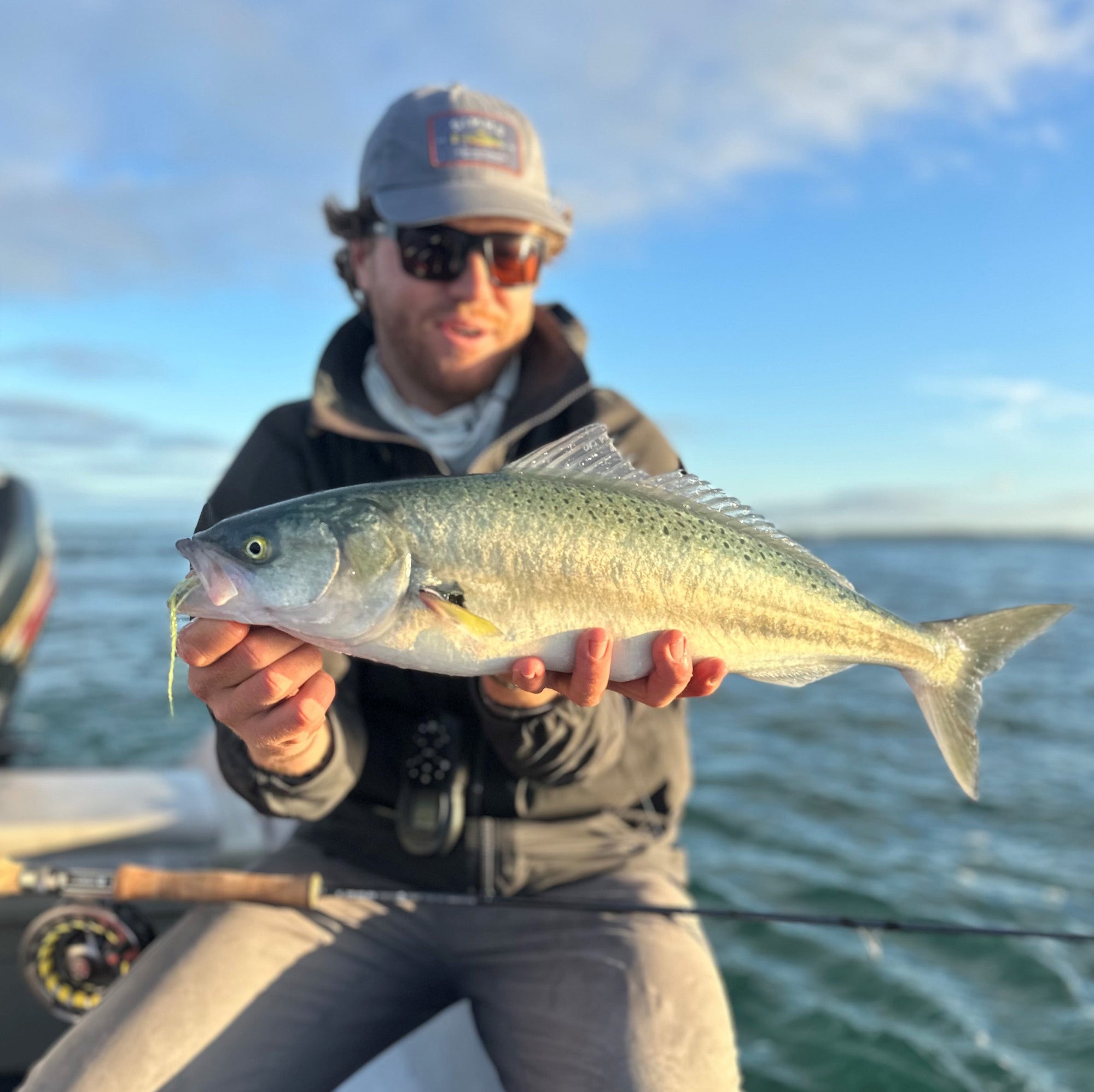Commonwealth fly fishing champion, Lubin Pfeiffer shares a few of his ideas.

It's early season here in Tasmania and the fish are hungry after the cold winter. Regardless of which of the lowland lakes you choose to fish, the trout will be eager to chase bigger offerings at this time of year. There are several techniques that work in these fisheries but fishing them with sinking lines can be the most effective. In this article I’ll run through the techniques I’ve found to become super effective while fishing Tasmania’s lakes - especially with sinking lines.
Early Season Options
The great thing about fishing with sinking lines is that you can use them in every type of water you find. Whether it is shallow weedy bays, or deep drop offs, sinking lines will get you to where the fish are holding. My favourite type of water would have to be lakes that have a good thick weedy bottom with about 1-2 metres of clear fishable water over the top of it. This water is just perfect for trout to cruise around in and has lots of food with plenty of cover. You can then make searching casts drifting over this and usually picking up lots of fish. Brushy, Blackmans, Big Waterhouse, Four Springs and Leake are perfect examples of this type of water. Early season will see great bags of fish come from fishing with sinking lines pulling flies such as woolly buggers or streamers. The amazing thing about Tasmania is there are countless lakes where this technique will work. If there is a piece of water that has trout in it, chances are they will be catchable using a sinking line setup.
The Gear to Get Set-Up
Commonly fishing with sinking lines in lakes is done by competition anglers and that means that the set-up is a little complicated. That said though, once you are set-up you will have a selection of lines that will enable you to fish any lake right across the globe. Thats the thing that I love about competition based techniques. Once you learn them you can take them anywhere in the world to catch fish, and usually lots of them. To get started you will need a suitable rod. Because of the weight of sinking lines you need something with a little bit of grunt. My preferred selection is a 6wt. As most of my sinking line fishing is done from boats I like to opt for a rod length of 10ft. This not only gives me extra power on the cast, it also helps me control my flies at the end of my retrieve during the ‘hang’. A 10ft rod length will also make landing fish easier from a boat. Comparing a standard 9ft 6wt rod to a longer 10ft version side by side in a boat you will definitely notice the difference. Reel selection is another very important piece of the puzzle. For sinking line fishing in boats, it could not be more true in saying that the reel is simply a line storage device. Rarely will you be fighting a fish off of the reel in a boat. As a line storage device though, it plays a massive part in successful fishing. You need a reel that comes with a large selection of spare spools to interchange lines throughout the days fishing, sometimes even throughout a drift if necessary. So with that in mind, choose a reel that comes with the option of getting spare spools easily. You can get away with a few to start with but I feel a little lost if I’m not heading out on a lake with my set of eight different spools with me. These are all loaded with lines of different sink rates and characteristics.
Fly Lines, Leaders and Tippet
The sink rate of fly lines is measured in ‘Di’ which is the ‘Depth in inches’ it will sink per second it is in the water. For example a Di5 fly line will sink five inches each second it is in the water. A Di3 will sink three inches for every second and so on. For my lake reel and line selection I like to have a full set of lines to cover every water I may come across.
Rather than having a selection of flies in different weights like you would fishing in rivers, the depth your flies sink when fishing in lakes, for the most part, should be dictated by the weight of the line taking them down. Because of this, I will take everything from a Di7, Di5, Di3, Fast Intermediate, Intermediate and floating lines. That way, regardless of the flies I have selected, I can fish them where the fish are holding.
Lubin Pfeiffer
There remainder of this article including line and fly selections and techniques is available by subscribing to Tasmania Fishing and Boating News. Click here, subscribe for $48 for 2 years and it will be delivered to your door.


